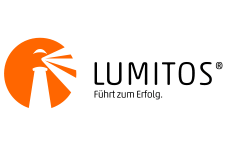Um alle Funktionen dieser Seite zu nutzen, aktivieren Sie bitte die Cookies in Ihrem Browser.
my.chemie.de
Mit einem my.chemie.de-Account haben Sie immer alles im Überblick - und können sich Ihre eigene Website und Ihren individuellen Newsletter konfigurieren.
- Meine Merkliste
- Meine gespeicherte Suche
- Meine gespeicherten Themen
- Meine Newsletter
253 Infografiken von compound-interest
rss| Sie können Ihre Recherche weiter verfeinern. Wählen Sie aus dem linken Bereich passende Suchfilter aus, um Ihre Ergebnisse gezielt einzugrenzen. |
Element Infographics
This latest graphic looks at the elements of Group 6. ‘Chalcogens’ is an IUPAC accepted name for Group 6. The term chalcogen itself comes from the greek word ‘chalcos‘, and roughly translates as ‘ore-former’.
Element Infographics
This graphic looks at the halogens, found in Group 7 of the Periodic Table. This group consists of the elements fluorine, chlorine, bromine, iodine and astatine – the as yet provisionally named artificial element 117, tennessine, may also be a halogen. As always, the following are a few ...
Element Infographics
The noble gases are one of the better known groups of elements in the Periodic Table, and whilst some of their applications are obvious, such as the use of helium in balloons, others, such as the use of xenon in medical imaging andas a neuroprotector, or the use of helium as a carrier gas in gas ...
Element Infographics
This graphic looks at some general properties of the transition metals – I had a little less space to work with than with the previous graphics, on account of the large number of elements that the transition metals encompass, but hopefully what’s included is still of use.
Element-Infografiken
Diese Grafik betrachtet die als Lanthanoide bekannten Elemente - diejenigen, die am unteren Ende des Periodensystems gestrandet sind, zusammen mit den Actinoiden. Für eine Gruppe von Elementen, die in der Chemieausbildung bis zumindest zum Bachelor nicht wirklich viel Aufmerksamkeit erfährt, sind ...
Element Infographics
The penultimate elements infographic focuses on the Actinides. Many of these elements don’t occur naturally, and are produced synthetically, with some of them existing only for a fraction of a second before they decay back into lighter elements.
For the fourth in the analytical chemistry series, we turn to mass spectrometry. So far, we’ve looked at how chemists can determine the presence of particular bonds present in molecules with infrared spectroscopy, and how they can gain information about the structure of molecules using hydrogen ...
Derzeit gibt es 13 bekannte Vitamine: die Vitamine A bis E, einschließlich einer Reihe von B-Vitaminen, und Vitamin K. Generell können wir alle Vitamine in zwei große Kategorien einteilen. Die fettlöslichen Vitamine, die Vitamine A, D, E und K, können von unserem Körper in der Leber oder im ...
Spiders are the most numerous venomous animals on the planet; the number of species predicted to be in existence, 150,000, is thought to be greater than the numbers of all other venomous creatures combined. Almost all spiders, with only a few exceptions, produce venom, which serves the primary ...
Insect venoms are complicated.Really complicated. You could be forgiven for thinking that it must be a relatively simple company of chemicals that makes up the painful sensation of a bee or wasp sting, but in fact a hugely complex mixture of all sorts of compounds – proteins, peptides, enzymes, ...
Sie erhalten passend zu Ihrer Suche die neusten Suchergebnisse per E-Mail. Dieser Service ist für Sie kostenlos und kann jederzeit abbestellt werden.













